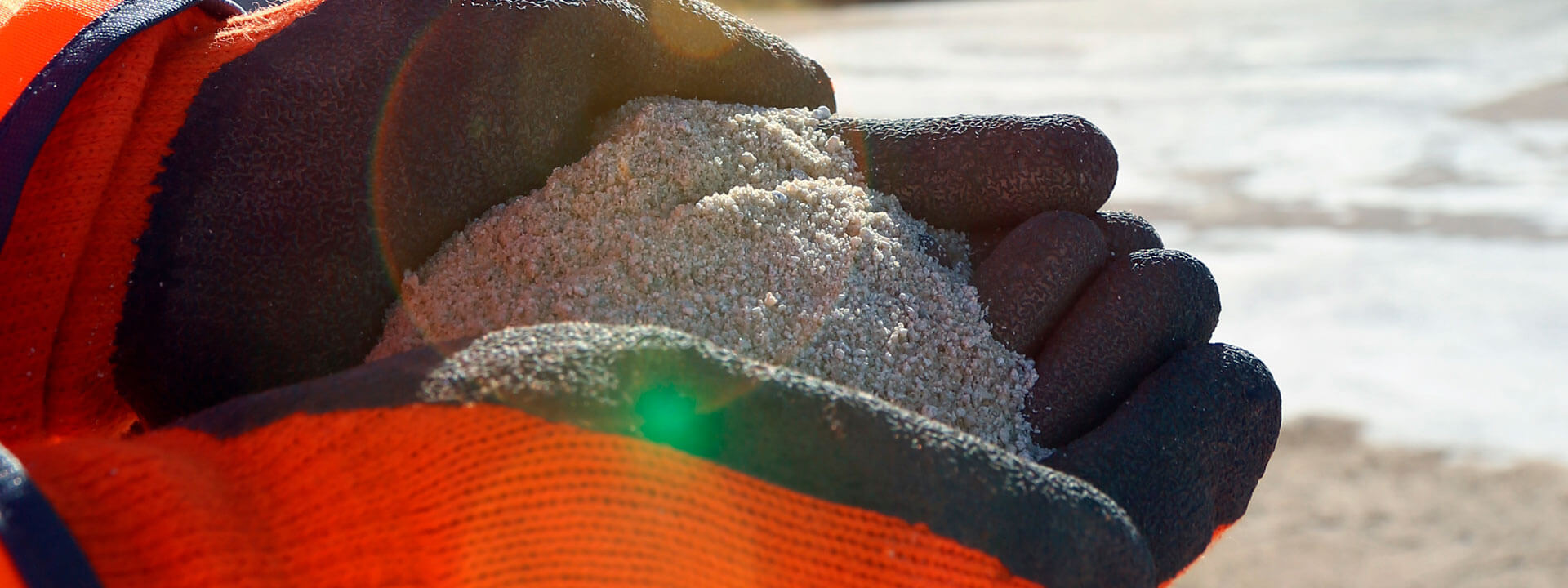What is Regen GGBS and why should you use it?
What is Regen GGBS?
Regen GGBS (ground granulated blastfurnace slag) is a replacement product for some of the normal Portland cement (PC) content in concrete, grout and mortar. It can significantly reduce the environmental impact of a project as it cuts the CO2 emissions associated with concrete while helping to conserve natural resources for future generations.
Regen GGBS can replace a substantial part of the PC content – generally about 50 per cent, but sometimes up to 95 per cent in special applications. It can be used anywhere concrete is needed – from sustainable housing development and soil stabilisation to wind farms and road building – and is typically used in major construction projects such as bridges and sea defences.
It is usually supplied as a separate cement component for concrete and is added at the in-mixer stage.
The sustainability benefits of Regen GGBS
The production of standard CEM I Portland cement (PC) is energy intensive and produces CO2 so manufacturers like Hanson have invested heavily over recent years to improve the efficiency of the production process and increase the amount of alternative fuels used to power the kilns.
Another way of reducing CO2 emissions is through using cement replacement products and GGBS is one of the most effective alternatives to PC as there are environmental benefits to be gained from both its production and throughout the life of the structure.
PC is made by mixing calcium carbonates like limestone or chalk with silica and aluminates, like clay, marl or shale. They are burned at a temperature of 1,450°C and, during the process, the calcium carbonate decomposes to calcium oxide and CO2 is released. At the same time the carbon in the fuel used to power the kilns combines with oxygen to give off further CO2.
But, the manufacture of Regen GGBS needs less than one third of the energy and produces less than 10 per cent of the CO2 emissions. This is because GGBS is a by-product of the iron making industry: slag is produced simultaneously with iron in a blastfurnace and is an inevitable consequence of the iron production.
To optimise the cementitious properties of the molten slag leaving the furnace, it is cooled rapidly before being dried and ground to produce a fine white powder that has similar characteristics to those of PC. Energy is only used in the drying and grinding process as the power used in melting is all allocated to the iron produced.
The major use of Regen GGBS is in ready-mixed concrete, with more than a third of all UK deliveries containing the product. Its addition into the concrete mix provides a more sustainable alternative to other cement substitutes, such as fly ash, as it reduces the amount of embodied CO2. Replacing one tonne of CEM I with Regen GGBS in a concrete mix reduces the embodied CO2 by around 780kg – equivalent to [give a relevant example].
There are also other environmental benefits: Regen GGBS does not require the quarrying of new materials and the slag used will not be disposed of as landfill.
Each year, the UK uses over 2 million tonnes of Regen GGBS as a replacement for cement. This:
- Reduces CO2 emissions by almost 1.56 million tonnes;
- Reduces primary energy use by 1.6 million MWh;
- Saves approximately 2.7 million tonnes of quarrying.
Enhancing durability
Concrete containing Regen GGBS is less permeable that than made with Portland cement, enhancing its resistance to many forms of chemical attack. This means that using Regen GGBS increases the long-term durability of concrete, reducing the amount of repair and maintenance needed and extending the service life of concrete structures. It provides:
- enhanced resistance to sulfate attack – both ettringite, which can cause concrete to crack, and thaumasite, which can undermine a concrete’s integrity.
- lower ingress of chlorides into the structure, particularly important in coastal environments.
- minimised risk of alkali silica reaction, which can cause cracking.
- better resistance to acid attack.
- lower propensity to delayed ettringite formation.
- reduced heat of hydration, reducing the risk of thermal cracking, particularly in large pours.
Improving aesthetics
Using Regen GGBS also gives a lighter coloured concrete than that made with Portland cement, especially at addition rates of 50 per cent or above. It is visually more appealing, softening the impact of large structures, such as bridges and retaining walls. It is also safer in darker areas as it has greater reflectivity and provides better visibility with reduced efflorescence.
Webinars
Find out more about how Regen GGBS can contribute towards improving the sustainability credentials of your concrete.
